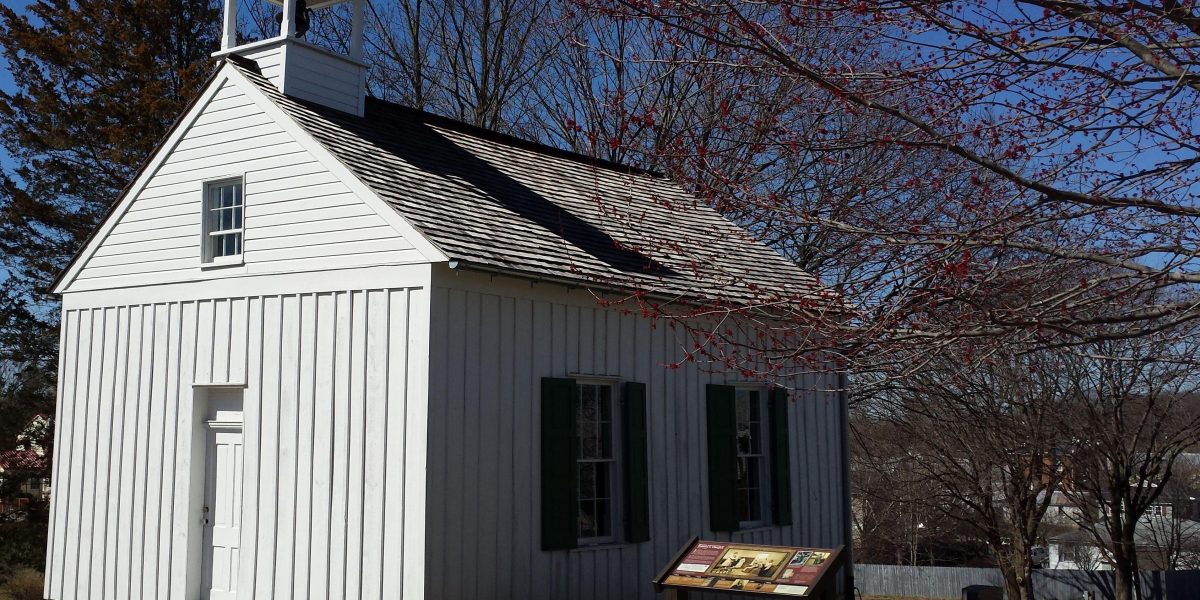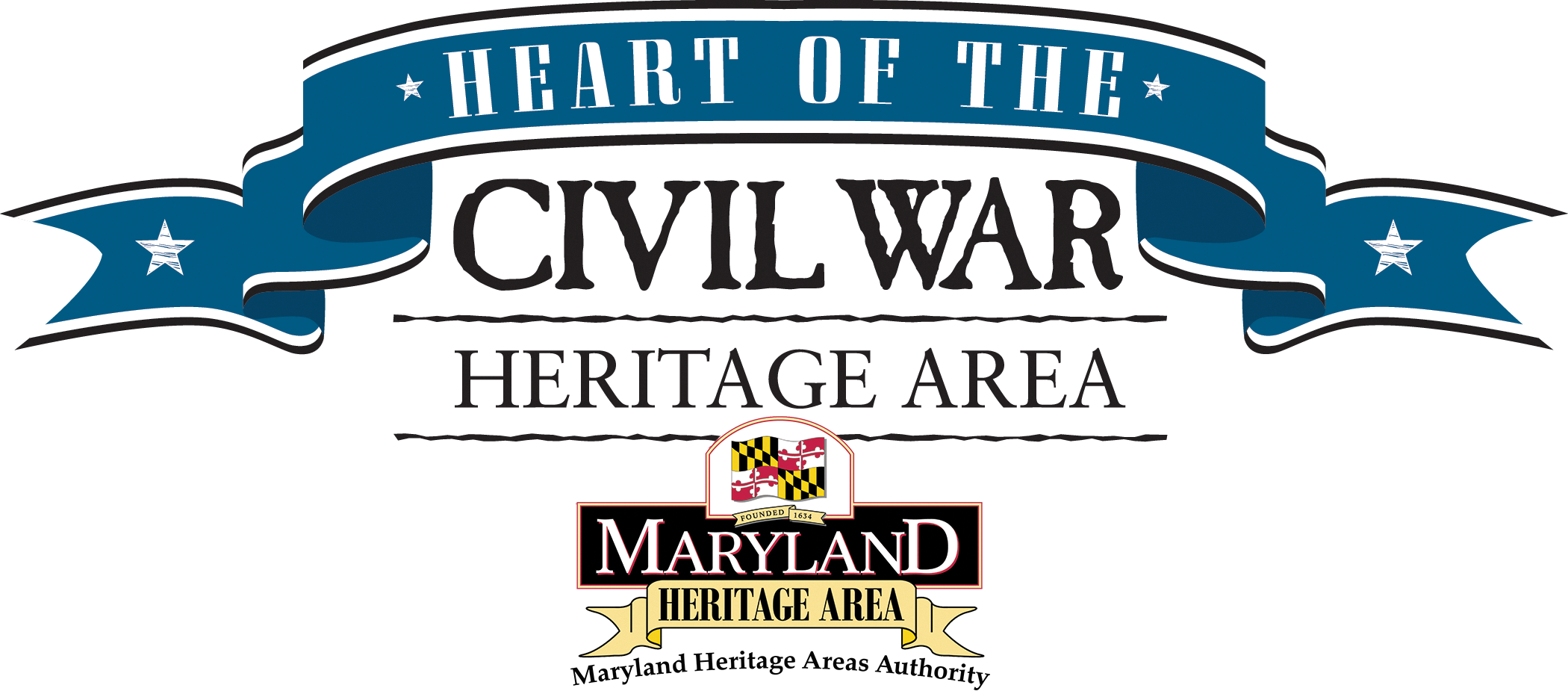Partner Content
Put on your walking shoes, hop in the car, and learn about Black history in the Heart of the Civil War Heritage Area. Choose one or many counties to explore and let Maryland’s history surprise and inspire you.
You can soak up the lush landscape in Carroll, Frederick, and Washington counties or walk the streets of some of Maryland’s oldest towns. These historic sites offer wayside interpretation on their grounds, fascinating place-based enrichment that may be enjoyed outdoors so you can still practice safe social distancing.
Frederick County
Frederick County is home to the historic Catoctin Iron Furnace, which sits at the base of the Catoctin Mountains. During the American Revolution, enslaved men and women worked at the Iron Furnace, forging the cannons and cannonballs that won American independence. Today, the Catoctin Furnace Historical Society seeks to uncover and share the stories of the people who lived and labored there. Take in their legacy while hiking the African American Cemetery Interpretive Trail, which begins at the surviving blast furnace and leads into the heart of the village to an overlook near the cemetery.
Hit the road and enter a new era by stopping at Laboring Sons Memorial Ground. Located in historic downtown Frederick, the interpretive waysides share the rediscovered past of this burial site. Black Marylanders from all walks of life are buried at this site, including men who had fought for freedom in the Civil War as part of the Union army’s United States Colored Troops. Then share your experience over a meal at Café 611, located less than three blocks away. Much of the downtown walking tour content was compiled at this Black-owned restaurant.
For more, refer to Frederick’s guide to African American heritage. The mobile-friendly website also offers a similar online walking tour of Frederick City, as well as a driving tour of the county.
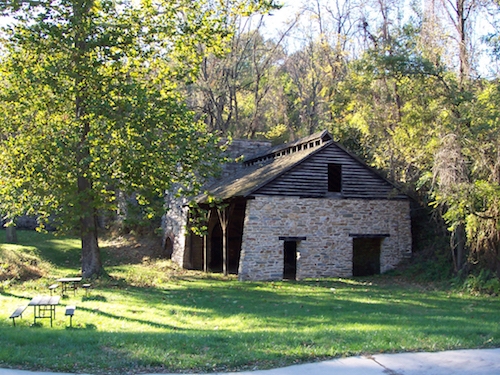
Catoctin Furnace: The historic Catoctin Furnace is the perfect location for a mid-road trip picnic and hike. Image courtesy of Visit Frederick.
Washington County
In Washington County, you get an immersive experience at the Hagerstown Underground Railroad Trail: Sites of Freedom and Resistance. Follow the trail from documented sites of escape to the places where freedom-seekers likely took refuge, including the historic Jonathan Street neighborhood, established by free people of color in the early nineteenth century. Less than 10 miles from the Pennsylvania border, Hagerstown was on the doorstep of freedom.
You can also travel into the county to visit the Kennedy Farmhouse. The Civil War Trails marker reveals that this was where John Brown and his fellow radical abolitionist raiders planned the attack on the armory in Harpers Ferry, hoping to strike a deadly blow against slavery.
Three years later, in 1862, Washington County witnessed the Battle of Antietam, the bloodiest single-day battle in American history. The battle was key to the release of the preliminary Emancipation Proclamation. Explore the historic town of Sharpsburg and visit Tolson’s Chapel (pictured in header image above), a church built by Sharpsburg’s Black community in 1866. It also operated as a Freedmen’s Bureau school in 1868. Wayside markers provide insight into the school and the adjacent cemetery. Don’t leave Sharpsburg without stopping for a refreshment break at Nutter’s Ice Cream, an old-fashioned shop off the town square. For more, download Washington County’s guide to African American history.
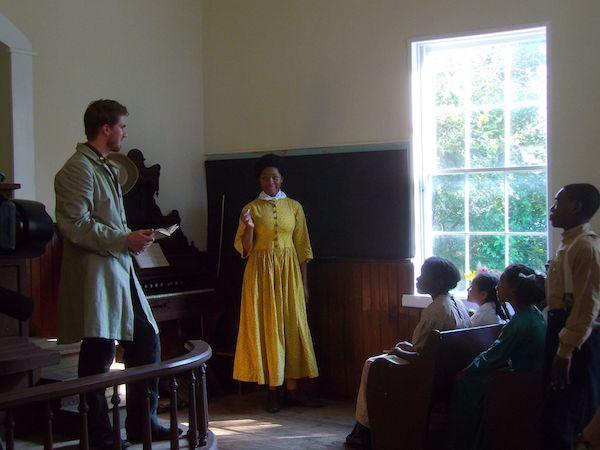
Tolson’s Chapel: A living history event at Tolson’s Chapel interprets the building’s past as a Freedman’s Bureau school.
Carroll County
Many of the historic cemeteries across Carroll County still display the craftsmanship of Black stone carvers Sebastian “Boss” Hammond and Caleb McPeak, both of whom employed a distinctive and elegant style of carving. Hammond was born into slavery in 1800. He was able to keep some funds from his work and eventually purchased his own freedom, and over nearly twenty years, the freedom of his wife and their eleven children.
Preservation efforts are underway at Westminster’s Ellsworth Cemetery, established in the mid-nineteenth century and final resting place of dozens of veterans of the United States Colored Troops. Among those buried here is Nicholas Paroway, who was born into slavery in 1766 and survived to see the Civil War and Reconstruction. He died in 1876 at the age of 110.
Early twentieth-century education is the focus of the Historic Sykesville Colored Schoolhouse, restored and furnished to its 1904 appearance. The school was the heart of a vibrant community, initially formed by freed Blacks who were joined by Black railroad workers. A slice of small-town Americana, Sykesville was recently named the 2020 Best Main Street in America. Beautiful Baldwin’s Station, a B&O Railroad depot from 1884, is now a lovely restaurant overlooking the Patapsco River—a fine place to relax and contemplate a day of discoveries along trails and tours in Maryland’s Heart of the Civil War Heritage Area. Twenty historic places tied to the African American history of Carroll County are featured in a downloadable brochure.
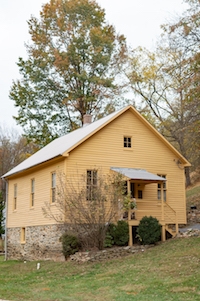
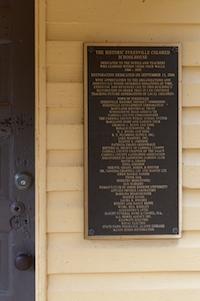
Sykesville Colored Schoolhouse: The historic Sykesville Colored Schoolhouse has been restored and furnished to its 1904 appearance. Image courtesy of Downtown Sykesville Connection.

